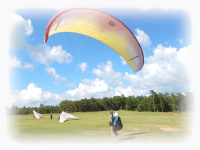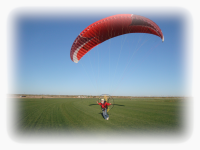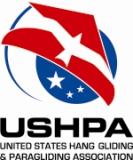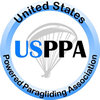Paragliding training information
updated February 12, 2025
If you are thinking about paraglider training, whether powered (PPG) or un-powered (PG), please study the material below. It will help you decide what \to do to and the best way to enjoy the thrill of flying like a bird. After studying this material, you may contact us if you have any questions.
Why train with us?
We do initial training via towing which is the fastest and safest way to train pilots how to fly safely. Training is 100% individualized. Student safety is our highest and only priority. If there are any doubts, please take a look at this page. This short video demonstrates the folly of do-it-yourself training – nobody was seriously injured, providentially.
Paragliding – a quick guide (from Cross Country Magazine) - here are some basics about paragliders, whether PG or PPG.
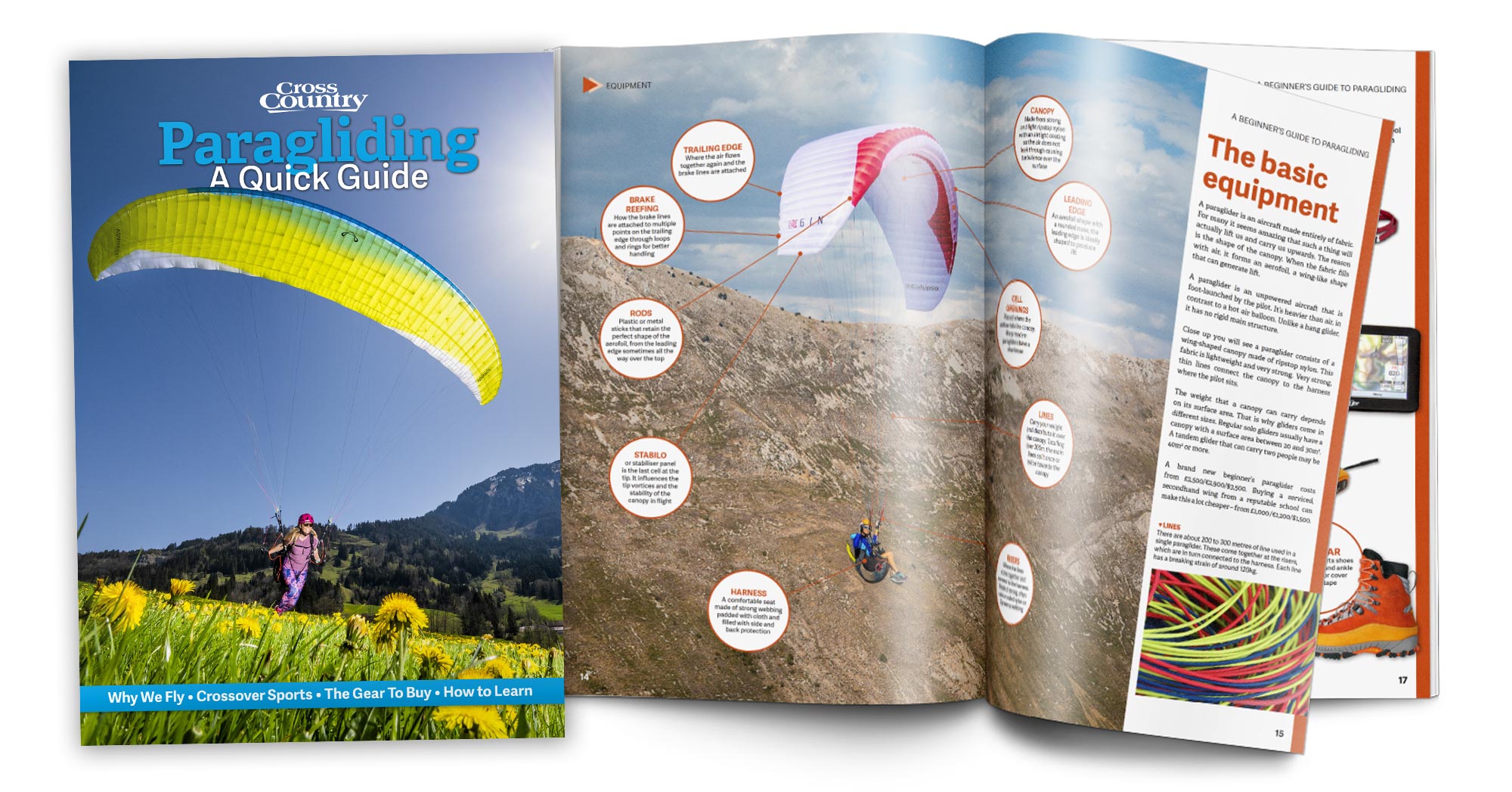
Our GOAL: to train all pilots thoroughly and safely
Study each of these steps for how to get the most out of your training. If you just want to know more about paragliding, read the General Information section.
Some of the steps below only apply to intermediate pilots and above and not to pilots beginning their training and the steps are so noted.
- General information about paragliding and our training program. After reading the General information page, decide if you would prefer free flight (PG) or powered flight (PPG).
The latter can be foot-launched OR wheeled (trike or quad). If in doubt about whether you would prefer foot-launched PG or PPG, it is better to start with free flight
(PG). You can change your mind at any time. Here is a fine PG video production by Steve Crye showing the elements of why we love to fly:
The Dream of Human Flight is now a Reality - The Joy of Paragliding.
While this video is only about PG it largely applies also to PPG.
All students who are just beginning their flying adventures (either the P1 or PPG1 program) are trained via pay-in towing because of the added safety and faster acquisition of the basic skills. Here are the details on why we do it this way rather than from a training hill. After learning the basic skills for flying a paraglider, students will either continue their training at a hill or mountain site (for PG) or with a paramotor at our airport (PPG). - Equipment for flying (Optional for those who are beginners and enroll as P1 or PPG1 students) We can give you expert help in choosing the best and most appropriate gear that fits
your age, skill level, interest, natural ability, and the altitude that you will usually fly in. Here are the typical setups and costs for paragliding or
powered paragliding. Foot-launched tuition includes the rental of all equipment required to train up to the early P2 level or early/mid PPG2 level. We
specialize in
Ozone paragliders/harnesses/reserves, Sol harnesses, Sup'Air
reserves/harnesses, and paramotors/trikes by Miniplane.
Other brands are available, if desired, but we do not know them as well. Training for wheeled powered paragliding does not
include the equipment which must be purchased prior to training.
- Physical and mental requirements – before you commit to train with us, you
must meet these minimal requirements.
- Membership P2 or PPG2 students and above must be members of the USHPA
for PG (free flight) or
USPPA for PPG (powered flight).
- Textbooks (Optional for those who enroll as P1 or PPG1 students) Purchase the appropriate textbook
for your type of training and begin your study of the material. These texts will also be handy for future reference.
- Ground school P2 students must complete the USHPA approved
P2
ground school course.
- FAQs & Tips Study the "*" items. Watch the
training videos. If you are a new student, please study this information on what
happens during a tow.
- Operation details – when training may be canceled, refunds, missed
training, dealing with fear of heights and anxiety, etc.
- Release, waiver, & assumption of risk (RWA) USHPA members automatically agree to the RWA.
USPPA members will need to agree and sign this
document.
- Tuition for lessons, ratings, requirements Paragliding (PG
or free flight) or
Powered Paragliding (PPG/Trike or powered flight). Choose and the course
Note: P2 Students paying the discounted tuition
will order their
basic
equipment package during the early stages of their P2 training rather than at the beginning.
- We will contact you to schedule a meeting at our shop or at an operations area and begin your training We do our best to schedule training when you, our student, is available. This can be any day of the week or holidays. At all times, the weather must be safe enough to fly in.
Flight school is conducted primarily at Robert S Kerr Airport in Poteau, OK.
Our training program is safe, fun, and personal. You will become a competent pilot when you graduate from Southwest Airsports.
Note: Public display of affection, crude jokes, and foul language have no place on our training field. Thank you.
Flying PG along the White Mountains, Owens Valley, CA. It does not get better than this. The Piute launch is about 20 miles in the distance. Mt. Whitney is just visible in the distant right.
When a student pilot graduates from Southwest Airsports, he will be able to fly safely anywhere in the world with confidence.
Paragliding is the closest thing to being a bird that there is. All other aircraft go down from there. No one has any idea what being a bird is like until he flies an ultralight, especially a paraglider. Below, going cross-country at cloud base over central Florida.
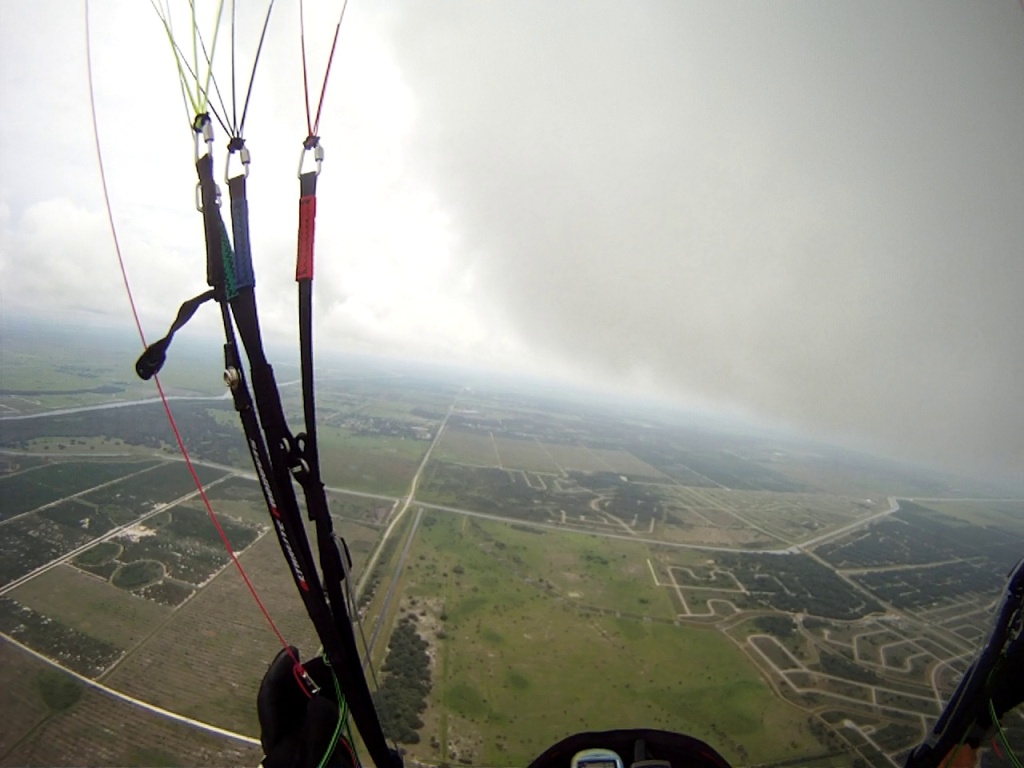
Extreme air sports like paragliding take years of practice to learn to do well. Pilots must be patient! The rewards for diligent and long term effort are, in our opinion, without equal, especially if you learn to thermal well. You will join an elite and tiny group of humans in the world who experience things ONLY the birds can. Want to know first hand what it feels like to exit and enter boundaries in the atmosphere? It's an unseen world that the hang glider and paraglider pilots – and the birds – know. Study the Turkey Vulture and the Albatross – we fumble along compared to these amazing geniuses. Their Creator intended them to fly so we can't be too jealous.
Gliding along at cloud base in south central New Mexico. (photo by Steve Crye)
Los Tanques launch, Cauca River Valley – near Roldanillo, Colombia
![]()
